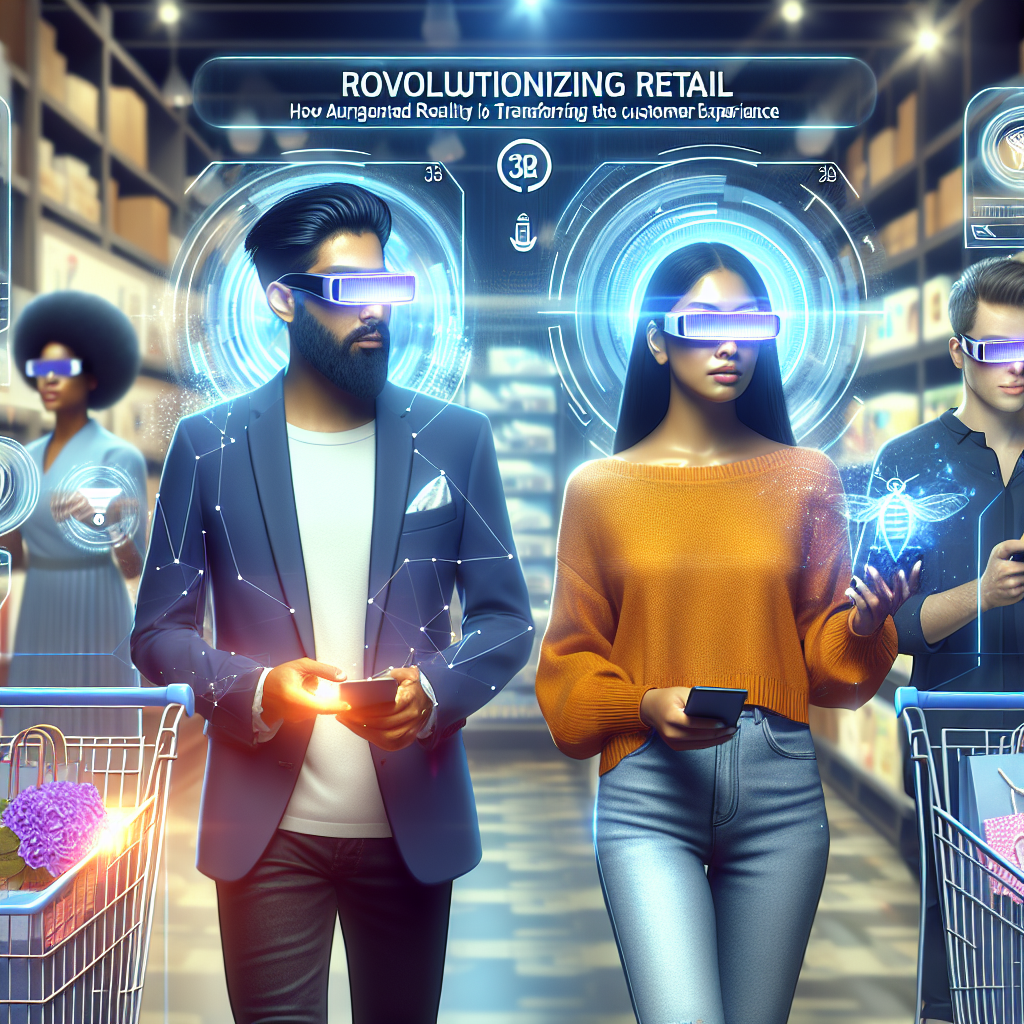Revolutionizing Retail: How Augmented Reality is Transforming the Customer Experience
In today’s digital age, technology is rapidly changing the way we shop. One of the most exciting advancements in retail is the use of augmented reality (AR) to enhance the customer experience. AR allows shoppers to interact with products in a whole new way, bringing the online shopping experience to life in-store.
So, how exactly is AR revolutionizing the retail industry? Let’s take a closer look at some of the ways this technology is transforming the customer experience.
1. Virtual Try-Ons
One of the biggest challenges of online shopping is not being able to try on clothes before purchasing them. AR technology is changing that by allowing customers to virtually try on clothes, shoes, and accessories before making a purchase. This not only helps customers make more informed decisions but also reduces the likelihood of returns, saving retailers time and money.
2. Interactive Product Demonstrations
AR technology also allows retailers to create interactive product demonstrations that showcase the features and capabilities of their products in a whole new way. Customers can use their smartphones or tablets to scan products and see detailed information, videos, and reviews right in-store. This helps customers make more informed purchasing decisions and increases engagement with products.
3. Personalized Shopping Experiences
AR technology can also be used to create personalized shopping experiences for customers. For example, retailers can use AR to recommend products based on a customer’s browsing history or previous purchases. This not only helps customers find products they are interested in but also increases customer loyalty and retention.
4. Enhanced In-Store Navigation
Another way AR is revolutionizing the retail industry is by enhancing in-store navigation. AR technology can be used to create interactive store maps that help customers find products more easily. Customers can simply scan a QR code or use their smartphone to navigate the store and find what they are looking for quickly and efficiently.
5. Virtual Shopping Assistants
AR technology can also be used to create virtual shopping assistants that help customers find products, answer questions, and provide personalized recommendations. This not only enhances the customer experience but also increases sales by upselling and cross-selling products.
6. Improved Product Visualization
AR technology allows customers to visualize products in their own space before making a purchase. For example, customers can use AR to see how a piece of furniture would look in their living room or how a new paint color would look on their walls. This helps customers make more confident purchasing decisions and reduces the likelihood of buyer’s remorse.
7. Increased Engagement and Brand Awareness
By incorporating AR technology into their retail strategy, brands can increase customer engagement and brand awareness. Customers are more likely to remember and shop at a brand that offers an interactive and engaging shopping experience. This can help retailers differentiate themselves from their competitors and build a loyal customer base.
FAQs
Q: How does AR technology work in retail?
A: AR technology works by overlaying computer-generated images onto the real world through a smartphone or tablet. Customers can use their devices to scan products or store displays to access additional information, videos, and interactive experiences.
Q: Is AR technology expensive to implement in retail?
A: The cost of implementing AR technology in retail can vary depending on the complexity of the project and the size of the store. However, there are affordable AR solutions available that can be customized to fit the needs and budget of any retailer.
Q: How can retailers measure the impact of AR technology on the customer experience?
A: Retailers can measure the impact of AR technology on the customer experience by tracking key performance indicators such as sales, customer engagement, and customer satisfaction. Retailers can also use surveys and feedback forms to gather insights from customers about their AR experiences.
Q: What are some examples of retailers successfully using AR technology?
A: Several retailers have successfully implemented AR technology in their stores, including IKEA, Sephora, and Home Depot. IKEA, for example, allows customers to use AR to visualize furniture in their own space before making a purchase. Sephora uses AR to offer virtual try-ons of makeup products, while Home Depot uses AR to help customers find products in-store.
In conclusion, augmented reality is revolutionizing the retail industry by transforming the customer experience in a variety of ways. From virtual try-ons and interactive product demonstrations to personalized shopping experiences and enhanced in-store navigation, AR technology offers endless possibilities for retailers to engage with customers and drive sales. By incorporating AR technology into their retail strategy, brands can differentiate themselves from their competitors and create a unique and memorable shopping experience that keeps customers coming back for more.
